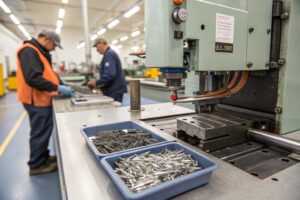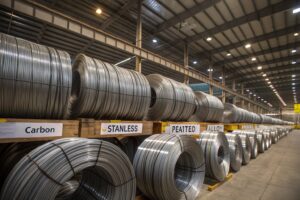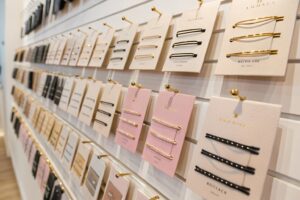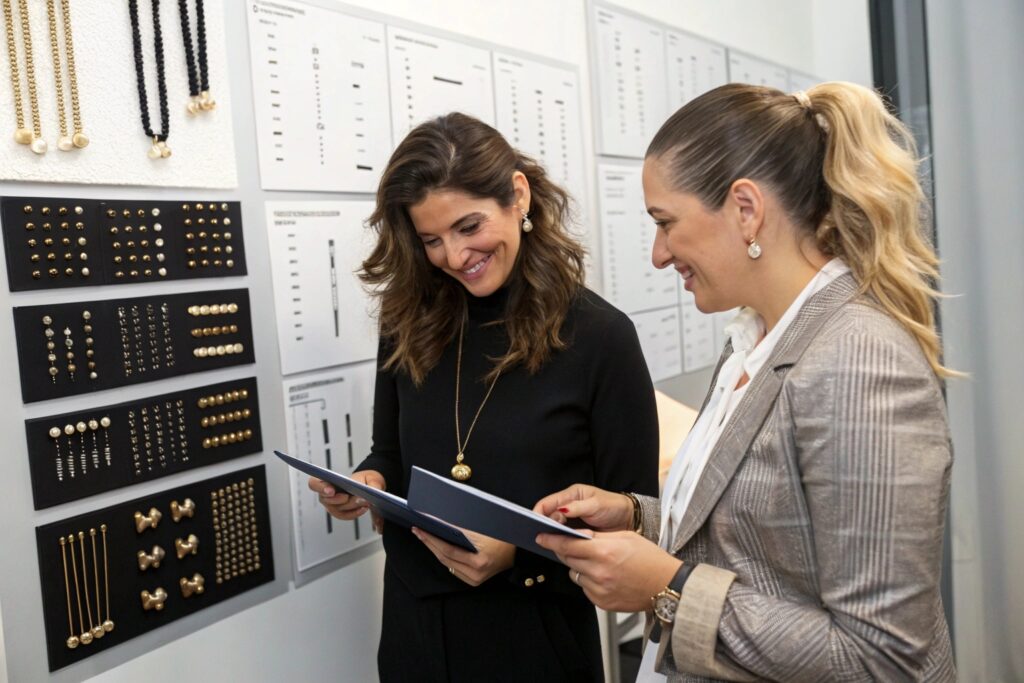You’ve got the logo. You’ve got the look. Now all you need is the product—but how many bobby pins do you have to order to make it happen? That’s where MOQ (Minimum Order Quantity) comes in.
Custom bobby pin MOQs from direct manufacturers like HairAcc typically start at 500–1,000 pieces per design, with full support for packaging, branding, and color customization. Lower MOQs are possible when using standard molds and finishes.
At HairAcc, we’ve supported hair accessory brands, gift shops, and e-commerce sellers worldwide. If you're thinking about launching a line of bobby pins, here’s everything you need to know—from MOQ to materials to market trends.
How to make a bobby pin?
It’s small, light, and simple—but a good bobby pin requires precision, tension, and the right material coating to stay in place without damaging hair.
To make a bobby pin, manufacturers use metal wire (often steel or alloy), shape it using stamping and pressing machines, apply coatings like paint or epoxy, and finish with wave crimping and tip guards.

What is the basic production process?
At our factory, the steps are:
- Metal cutting – Wire is sliced to the required length (typically 5cm–6cm).
- Shaping – One side is bent into a wave or straight pattern.
- Crimping – The wavy side is pressed to ensure tension.
- Tip coating – Tips are dipped in protective resin or rubber to prevent scalp scratching.
- Surface finish – Sprayed with black, brown, gold, or custom colors.
- Drying + Inspection – Each batch is oven-cured and quality checked.
We also offer custom logo printing, holographic finish, and custom blister card or tin packaging.
| Process | Time Needed | Customizable |
|---|---|---|
| Cutting + Forming | 1 day | No |
| Painting | 2–3 days | ✅ Color, logo |
| Packing | 1–2 days | ✅ Card, tin, box |
MOQs can be as low as 500 pcs per color with standard mold, or 1,000+ for new shapes or coatings.
Are bobby pins considered metal?
It might look like plastic from a distance, but that sleek little pin is almost always forged in steel.
Yes, bobby pins are considered metal accessories. Most are made from carbon steel, stainless steel, or plated alloy, providing strength, flexibility, and long-lasting hold.

Why metal and not plastic?
Metal offers:
- Spring tension – so the pin grips the hair tightly
- Thin profile – ideal for discreet styling
- Paint adhesion – for aesthetic finishes like matte black or shiny gold
- Durability – won't snap like plastic
While plastic alternatives exist (often used for decor or kids’ lines), they’re mostly aesthetic and lack the performance of metal.
What types of metal are used?
| Material | Properties | Common Use |
|---|---|---|
| Carbon Steel | Strong, holds shape | Standard black bobby pins |
| Stainless Steel | Corrosion-resistant, shinier | Premium or salon lines |
| Brass/Alloy | Decorative, good for plating | Gold-tone or antique styles |
HairAcc offers all three based on your needs. We source eco-grade steel and meet REACH and CA Prop 65 compliance for EU and US orders.
Where do bobby pins come from?
Before they were mass-manufactured in China or South Korea, bobby pins had a surprising start in early 20th-century beauty history.
Bobby pins were invented in the 1920s in the United States to support the bob haircut trend. Today, most bobby pins are made in Asia—especially China, where scale and tooling dominate the market.

Who invented the bobby pin?
Luis Marcus, a San Francisco-based cosmetics manufacturer, is credited with inventing the bobby pin around 1920. It was designed to discreetly hold down the popular “bob” haircut for women—hence the name.
The pin became essential during:
- The flapper fashion era
- The WWII pin-up styles
- The 1950s updos
- The 2000s Y2K rhinestone trends
Today, they’re not just functional—they’re fashion.
Where are they made now?
| Country | Strengths | Limitations |
|---|---|---|
| China | Low cost, high volume, custom | Language barrier (solved via direct factories) |
| South Korea | Premium packaging, trend-led | High price |
| India | Handmade or brass-based pins | Limited standardization |
HairAcc produces over 10 million bobby pins per year—both classic and custom-designed—for clients in the US, EU, and Russia.
How do you organize bobby pins?
One of the top complaints from buyers? “I always lose my bobby pins.” That’s why packaging and storage solutions matter for both retail and long-term brand recall.
Bobby pins can be organized using magnetic tins, backer cards, blister packs, or fabric bands—each offering a different aesthetic and functional purpose for retail and personal use.

What packaging options do we offer?
At HairAcc, we provide:
- Card backing – Classic blister card with logo + barcode
- Mini tins – Ideal for travel or gifting
- Magnetic strip sets – Keeps pins aligned, reusable
- Fabric roll pouches – For pro salons or gift sets
We also help clients customize:
| Packaging Type | MOQ | Customizable Elements |
|---|---|---|
| Logo card | 1,000 sets | Color, size, print |
| Tin box | 3,000 sets | Logo lid, inner foam cut |
| Plastic blister | 2,000 sets | Shape, color, header |
| Fabric pouch | 500 pcs | Embroidery, pocket layout |
Buyers love smart packaging because it increases shelf value and reduces returns. One brand we work with increased their Amazon rating from 3.8 to 4.6 simply by adding a reusable tin to each set.
Conclusion
Custom bobby pins are small, but sourcing them smart makes a big difference. From low MOQs to smart packaging, a direct manufacturer like HairAcc helps you launch with control, style, and strong margins—pin by pin.









